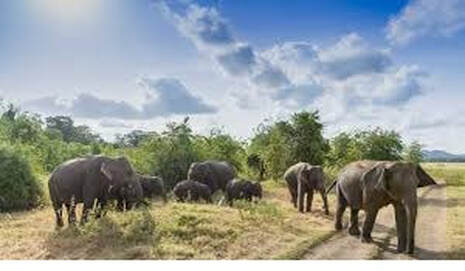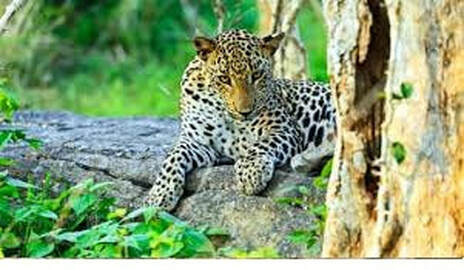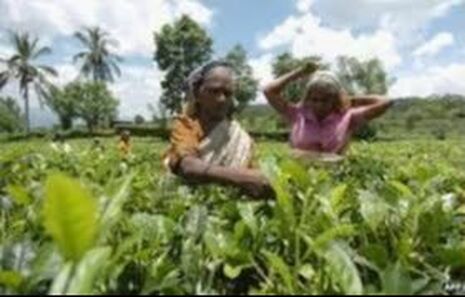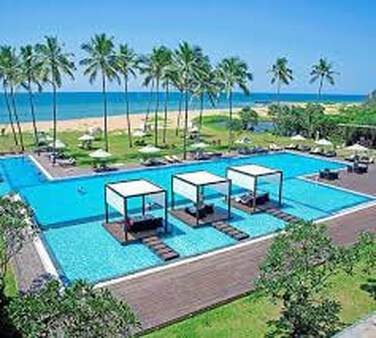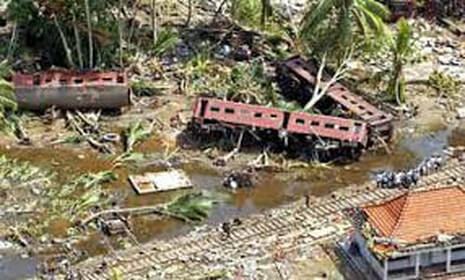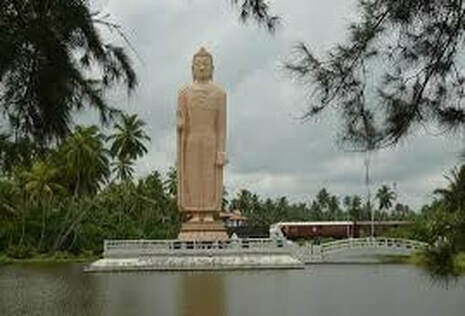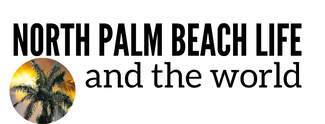What's the Holdup? -- Oh! It's an Elephant!
|
By BRIAN WILSON
UK Travel Correspondent Special to North Palm Beach Life You may have traffic problems with too many cars, bad drivers, or even a spot of bad weather (I understand that the odd storm does hit Florida – that’s a bit of British understatement – we know it can be very bad!!) However, have you ever had problems with elephants? They do in Sri Lanka. Have I got your attention? Let me tell you about our trip to this wonderful island – the Pearl in the Indian Ocean. My wife Mo and I went on a 12-week trip in January and we’d like to tell you about it – you may think about taking the trip yourself. OK, it may be a good few hours to get there (I think the shortest is 20 hours with 1 stop) but, believe me it will be worth it. Some Sri Lanka facts – it is situated like a tear drop just off the southern tip of India. Sri Lanka at 65,610 km2 is just 38% the size of Florida – or you can get 2.5 "Sri Lankas" into Florida. But both have similar populations (21.5million SL c.f. 21.0 million Florida). For my British readers, Sri Lanka is 26 percent the size of the UK . Although a relatively small island, Sri Lanka has a wide range of landscapes (dense forests to tea plantations), a bewildering choice of flora and fauna (elephants, crocodiles, leopards, so many birds and billions of insects). But this small island has 8 UNESCO Word Heritage sites – Sigiriya, Golden Temple at Dambulla, Galle Fort, the sacred cities of Anuradhapura and Kandy, Polonnaruwa, Sinharaja Forest reserve and the Central Highlands. Sri Lanka is on the route of many of the ancient trade routes. The Greeks called it ‘Taprobane’ as they could not pronounce the local word "Tambapanni." The Arabs called it "Serendib" – from where get our word "serendipity" or a soothing state of mind. The island has also been known as: Eelam (to the Tamils) - Ceilao (Portugese) – Zeylon (Dutch) – Ceylon (British). Sri Lanka means "resplendent island" in Sanskrit, but the words Lanka just means island. So many names for such an island with so much to give. Looking back through history; all too often trade turned into some form of domination – Arabs from 7th century AD – the Portuguese arrived in 1505 and within a few years controlled great swathes of the country – by 1658 the Dutch had forced out the Portuguese and started their own control – in 1796 the Dutch invited the English East India Company to help protect them from the French – a bad move on their part, for, by 1815 the British had conquered the whole island. Understandably, there were rising tides of Nationalism, so that in 1948 Ceylon (as it was known then) gained independence and is still part of the Commonwealth of Nations. I will skip over the civil war that ended in 2009. When you visit Sri Lanka and stand on one of the many beautiful beaches, you cannot imagine what happened on 26th December 2004 – a Tsunami caused by an undersea earthquake in Sumatra. It quickly spread across the Indian Ocean and smashed into the East and South East coasts of Sri Lanka. If you have not seen one (we have not) you cannot appreciate the power and the devastation, so go to https://edition.cnn.com/2014/12/24/world/asia/remembering-sri-lanka-tsunami/index.html for an idea on what people faced. Waves ranging from 15 to 30 feet high crashed into the coast. There were thousands killed and millions displaced – to say nothing about the destruction of businesses and infrastructure. Many countries gave money to the affected area so they could clean up and rebuild so now, when you travel along the coast, it looks as thought nothing has happened. Hotels have been refurbished, houses and businesses rebuilt and people go about their normal life. The Singhalese are a resourceful and hardworking people, unlike other areas on the world that have been hit by storms and other disasters, they have rebuilt their lives and love to welcome visitors. Sometimes you can see the odd remains of a damaged building. The problem is that, if the owners and their family are dead, who can claim ownership? As you travel along the coast road you can see many memorials to people who were overwhelmed by the onslaught. Perhaps one of the most poignant sites is where the train that ran along the coast was totally overwhelmed by a massive wave that destroyed carriages and killed over 1,500 people – this is the world’s worst railway accident. You may ask why people did not try to escape. Well, they thought the wave would not be very high, after all they were some 660 feet inland. Some stood on top of the carriages, others sheltered behind the train. But the force of the main wave that was some 30 feet high -- i.e. some 9 feet above the carriage roof, -- just wiped everything off the face of the earth. The train was moved some 330 feet and all the nearby houses and villages were destroyed It takes something like this to realise how lucky we are – we may have bad weather, but nothing on this scale Let’s change the tone – back to the beginning. We had a car and a driver for our tour (this is strongly recommended). Traffic and driving in Sri Lanka is a sight to behold – it’s mad. People overtake in places we would not even think of and buses are a law unto themselves. So, when we were driving through the countryside to our next UNESCO site, we came upon a traffic jam. Was this a horrific accident? Our driver asked us to look out of the window, not to see carnage and damage, but a lone female elephant walking along the road at her own pace. It is clear that, "elephants have priority" (they are much bigger than you!!) and elephants cannot read the Highway Code (I think they are called the "Rules of the Road" in the USA). No one shouted, they just let the elephant go on her own sweet way until she left the road for the surrounding jungle. It was a fantastic sight to see a wild elephant doing her own thing – after all, her ancestors were here well before we were!! |
List of All 'Life in the UK' ArticlesSri Lanka hotel
Tsunami train destruction
The Sri Lankan people are not only kind, they are hard working and resourceful. To remember this train wreck and the effect on the local communities they not only rebuilt the area, they also erected this amazing Buddha to create a serene atmosphere to remember all those who died.
Credits Wilson Wilson
My wife, Mo (short for Maureen) and I visited Sri Lanka on a tour provided by Aitken Spence (Colombo Office 4th floor, Aitken Spence Tower 2, 315 Vauxhall Street.
mail [email protected] Have you been anywhere else you’d like to tell us about? Email Brian |
